Bristol Railroad Station
Introduction
Text-to-speech Audio
Images
Bristol Railroad Station and historical marker, 2018
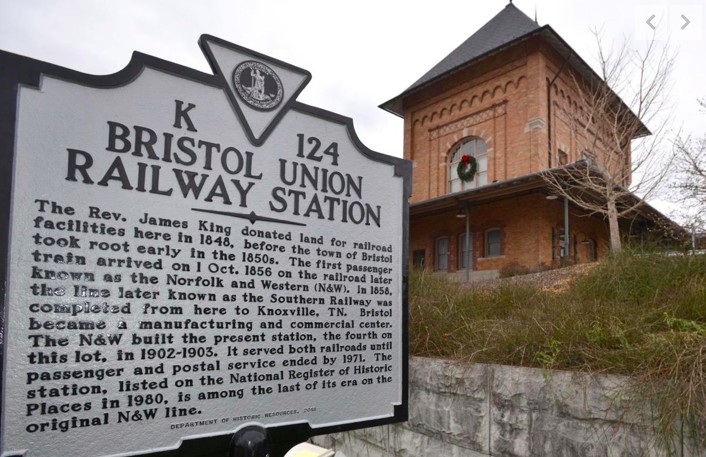
Bristol Railroad Station, 2008
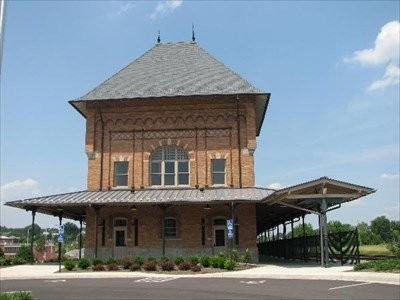
Bristol Railroad Station, 2008


Clinchfield No. 1 at Bristol Train Station in 1978 for U.S. Sen. Howard Baker's second campaign tour across Tennessee
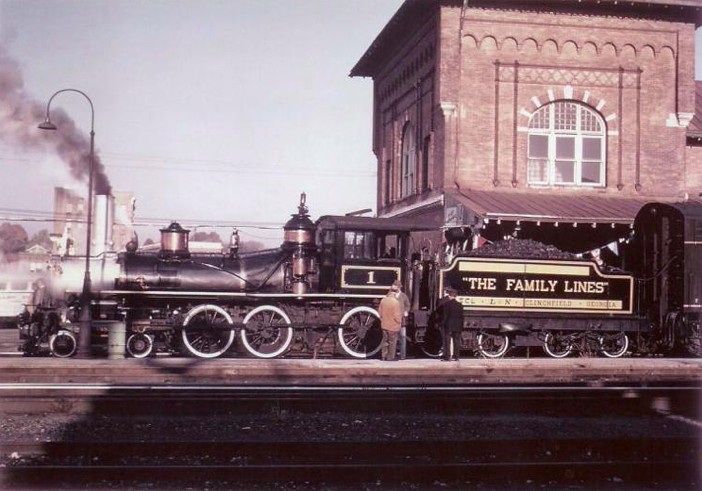
Historic photo of Bristol Train Station
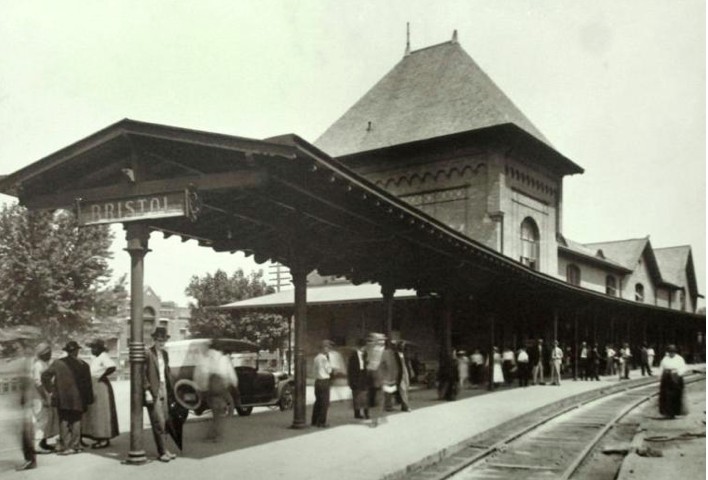
Amtrack train passes Bristol Train Station during 2011 trip from Roanoke to Bristol
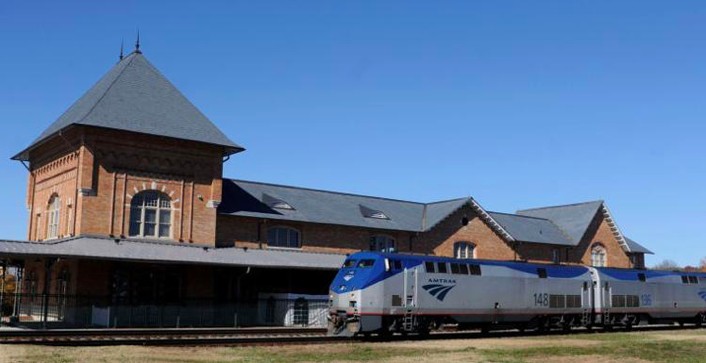
Backstory and Context
Text-to-speech Audio
The land upon which the station currently sits was donated by Rev. James Kin in 1848, before the establishment of Bristol in the 1950s. In 1856, the first-ever passenger train in Bristol arrived at the Norfolk and Western station. Just two years later, the Southern Railway was completed, stretching from Bristol to Knoxville. Subsequently, Bristol flourished as a prominent manufacturing and commercial center in the region.
The first depot at which the first passenger train in Bristol arrived at in 1956 was constructed by James Fields of Abingdon. This depot, in comparison to the current station, was located slightly farther north. Today, it would be located directly east of the intersection of Cumberland Street and the Randall Street Expressway. The initial depot was destroyed on December 14, 1864 during the 3rdNorth Carolina Mounted Infantry’s raid, under Union Maj. Gen. George Stoneman, into Southwest Virginia.
Following the Civil War, a freight car was temporarily utilized as the town’s freight depot until 1866 when construction of a new depot was completed. By the 1880s, Bristol’s flourishing and growth led to the need for a larger depot to serve the region. In 1881, a 326 feet long passenger shed was constructed, along with a temporary office building on one end, and the existing depot was subsequently destroyed. The third depot was constructed by William H. Smith or John M. Crowell and was completed early in 1882.
When the current station was constructed in 1902-1903, by John Pettyjohn and Company of Lynchburg, Virginia, it became the fourth station to exist on the lot. The design of the current station bears extensive resemblances to design plans for a structure which was projected to be built in 1889 but never was. For the majority of the 20thCentury, the Bristol Railway was utilized as one of the most prominent freight and passenger depots in the region. According to a report published in December last year by the Bristol Herald Courier, when the Bristol Station’s historic marker was unveiled, Tim Buchanan, vice president of the Bristol Historical Association and member of the Bristol Train Station Foundation, said, “Before 1971, this was the interstate that brought everything to Bristol.” 1
In 1999, the Bristol Train Station Foundation purchased the structure with plans to renovate and restore the station as a centerpiece of downtown Bristol. The Foundation reportedly planned for the station to be operating again soon after its restoration. In 2008, the Bristol Station began a decade-long restoration process which was completed in 2018. The restoration process required over $5 million in funds.
Today, the station is utilized for a variety of public and private events. However, local publications have recently reported the Bristol Tennessee-Virginia Rail Coalition is supportive of the prospective return of passenger rail services to Bristol in the future. The same report from last year by the Bristol Herald Courier revealed that the group, including over twenty local organizations, “supports the extension of passenger rail from Roanoke, Virginia, to Bristol and then southward to Knoxville, Tennessee; Chattanooga, Tennessee; Atlanta, Georgia; and Birmingham, Alabama.” 1 A 2017 Amtrak study also concluded that a potential passenger line from Bristol to Roanoke would likely be profitable, and the city of Bristol, VA, is now working on its own study.
Cite This Entry
Admin, Clio and Douglas J Harding. "Bristol Railroad Station." Clio: Your Guide to History. August 3, 2019. Accessed April 21, 2025. https://theclio.com/entry/12760
Sources
"Bristol Depot." Bristol Historical Association. 2007. July 2019. https://www.bristolhistoricalassociation.com/bristoldepot.html.
"Bristol Railroad Station - Bristol, Virginia." Waymarking. June 8, 2008. July 2019. http://www.waymarking.com/waymarks/WM3YZQ_Bristol_Railroad_Station_Bristol_Virginia.
"Bristol Railroad Station." Virginia Department of Historic Resources. September 10, 2018. July 2019. https://www.dhr.virginia.gov/historic-registers/102-0011/.
"Bristol Train Station." Bristol Herald Courier. June 27, 2014. July 2019. https://www.heraldcourier.com/bristol-train-station/collection_9e3628c4-fe32-11e3-8b17-001a4bcf6878.html.
Bristol Train Station. July 2019. https://www.bristoltrainstation.org.
"Clinchfield No. 1 in Bristol, Va." Bristol Herald Courier. November 4, 2013. July 2019. https://www.heraldcourier.com/clinchfield-no-in-bristol-va/image_d5dc6f1e-4d38-11e3-b662-001a4bcf6878.html.
Crigger, David. "BHC 042814 Bristol Trains MON 01.jpg." Bristol Herald Courier. April 25, 2014. July 2019. https://www.heraldcourier.com/bhc-bristol-trains-mon-jpg/image_43471d64-ccb5-11e3-bb4f-001a4bcf6878.html.
1 Greiss, Leif. "Historic marker dedicated to Bristol railroad history and train station." Bristol Herald Courier. December 4, 2018. July 2019. https://www.heraldcourier.com/news/historic-marker-dedicated-to-bristol-railroad-history-and-train-station/article_ee31eda7-0f6d-5773-8849-667d8fc7f5e8.html.
Loflin, Lewis. "History of the Bristol Trainstation." Sullivan County. July 2019. http://www.sullivan-county.com/news/ts/history.htm.
"National Register of Historic Places Inventory Nomination Form for Bristol Union Railway Station." Virginia Department of Historic Resources. November 28, 1980. July 2019. https://www.dhr.virginia.gov/VLR_to_transfer/PDFNoms/102-0011_Bristol_Railroad_Station_1980_Final_Nomination.pdf.
Phillips, Bud. "Bristol's old freight depot handled virtually all incoming and outgoing freight." Bristol Herald Courier. June 22, 2014. July 2019. https://www.heraldcourier.com/news/local/bristol-s-old-freight-depot-handled-virtually-all-incoming-and/article_df02f04e-f7c5-11e3-a4fc-0017a43b2370.html.

